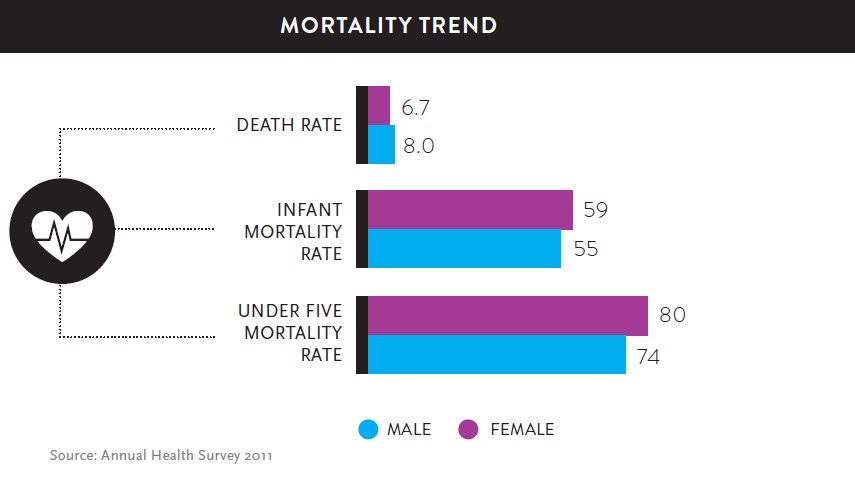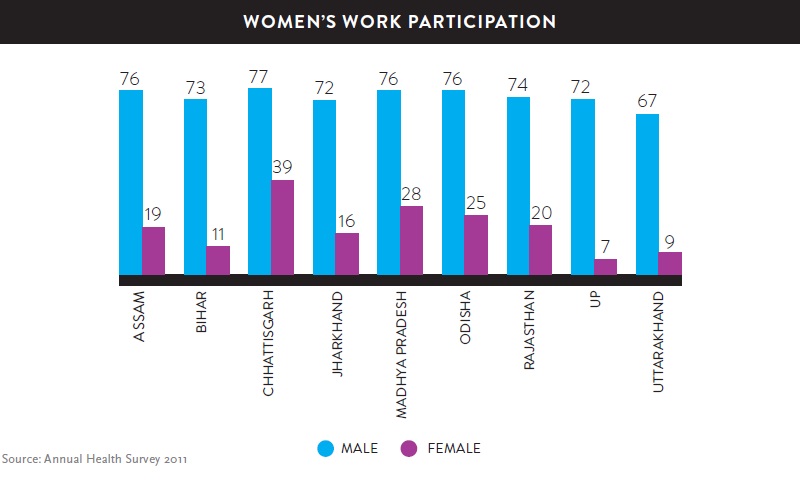A look at gender disparity in 21st century India
With the advance of the 21st century, Indian women are taking on more significant roles when it comes to shopping. They’re as likely as Indian men to log online to plan purchases, and half of all women respondents in a recent survey were the key decision-makers during car purchases. But in many aspects of life—social, cultural and even financial they still face gender discrimination.
In India, for every 100 men in the country, there are only 93 women, which is below the global norm of 106 women for every 100 men. This reflects, in large part, both passive and active infanticide through unequal allocations of health, nutrition and other resources. In fact, girls born in India are 8-10 percent more likely to die before their fifth birthday than boys.
The U.N. lists promoting gender equality and empowering women as its third Millennium Development Goal (MDG) and recognizes that this goal is both an important objective in itself and central to achieving the seven other goals*, including the fourth and fifth MDGs to reduce child mortality and improve maternal health. However, a major challenge today is turning people’s understanding of gender equality into commitment and desired action around the globe.
To galvanize efforts, the U.N. set the third MDG to eliminate gender disparity in primary and secondary education by 2005, and in all levels of education no later than 2015. Though India missed the 2005 deadline, the country has recently sped up its progress and the gender parity index for Gross Enrolment Ratios in primary and secondary education has risen.
According to the Ministry of Statistics and Programme Implementation report, the Gross Enrolment Ratio (GER) at the primary level was 83.8 in 1990-91 and it increased to 95.7 in 2000-01 and to 116 in 2010- 11. For the middle/upper primary level, the GER was 66.7 in 1990-91 which declined to 58.6 in 2000-01 and then gradually increased to 85.5 in 2010-11. However, the female to male ratio in education has been steadily improving over the years. In primary education, the Gender Parity Index (GPI) has gone up from 0.76 in 1990-91 to 1.01 in 2010-11 and in secondary education from 0.60 in 1990-91 to 0.88 in 2010-11.
Surveying the nation’s health
The Government of India’s Annual Health Survey (AHS), which was conducted in part by Nielsen, sheds some light on the subject of gender disparity. The data reflects discrimination against women at all levels—from education to employment to health—against the backdrop of the UN’s MDGs. The AHS was conducted across nine states—Bihar, Rajasthan, Uttarakhand, Madhya Pradesh, Jharkhand, Assam, Chhattisgarh, Odisha and Uttar Pradesh—to yield benchmarks of core vital and health indicators at the district level.
Why only nine states? Together, these states cover 48 percent of the country’s population and 59 percent of births, and also perform low on vital maternal and child health indicators. Moreover, these nine states account for 70 percent of infant deaths, 75 percent of deaths among children under five years old and 62 percent of maternal deaths in the country.
Objectives of the annual health survey
- To generate benchmarks of core vital and health indicators at the district level
- To map the efficacy of various health interventions including those under national rural health mission
- To directly monitor MDGs on child mortality and maternal health at the district level

Inequality in the workplace
India is changing, and women today enjoy far greater freedom than ever before. However, due to existing deep-rooted traditions and archaic societal notions, they still have unequal access to education, work, and health facilities.
The Government of India’s 2009 MDG report notes “participation of women in employment and decision-making remains far less than that of men, and the disparity is not likely to be eliminated by 2015.” In all nine states covered in the survey, women were less than half as likely to hold jobs than men. While the work participation rate among males ranges from 67 to 77 percent across different states, among females it is just 7 to 39 percent.





